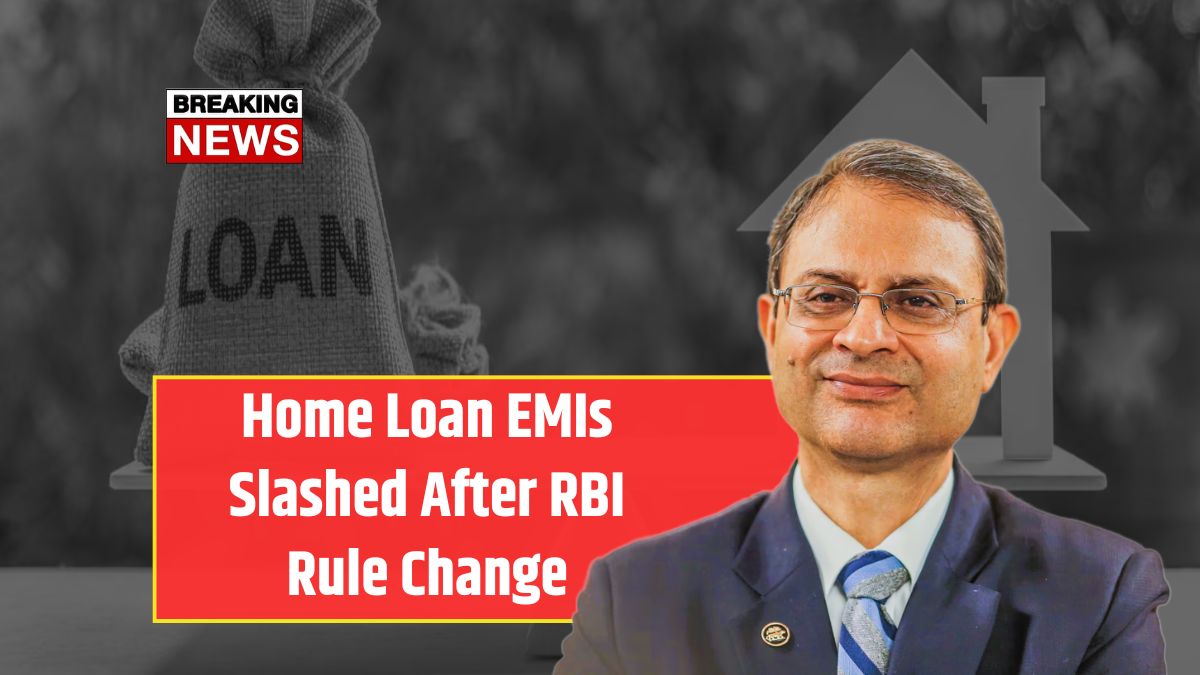RBI Rule Change – Good news is here for home loan borrowers across India. The Reserve Bank of India has come up with a fresh rule that is set to bring some much-needed relief for millions of people. With this new change, monthly home loan EMIs are set to come down, putting more money back into the pockets of borrowers. This move is not just about helping individuals manage their finances better, but it also aims to boost the real estate market and drive more economic activity.
What Has Changed with the RBI Rules
The major factor behind this big relief is the change in the repo rate. The repo rate is the rate at which the RBI lends money to commercial banks. When the repo rate is reduced, it means that banks can borrow money at cheaper rates. The RBI has recently cut the repo rate by fifty basis points, and this time they have made it clear that banks must pass on the benefit to customers immediately.
Because of this mandate, banks have started lowering the interest rates on home loans. As a result, people paying EMIs on their home loans will see a noticeable drop in their monthly payments.
How Much Can You Actually Save
Now the real question everyone is asking is how much will you save. The answer depends on your loan amount, the interest rate you are currently paying, and how many years are left on your loan. On average, the reduction in EMI could be anywhere between eight hundred to two thousand rupees per month.
For example, if you have a twenty-year home loan of forty lakh rupees, your EMI could drop by nearly one thousand four hundred rupees every month. Over the full term of the loan, this would add up to savings of more than three lakh rupees. That is a significant amount, and it can make a real difference to household budgets.
Who Benefits the Most
If you have a home loan with a floating interest rate, you are in luck. The change will automatically reflect in your upcoming EMIs without you having to do anything. Banks adjust floating rate loans based on the changes in the repo rate, so you will start seeing the savings very soon.
If you have a fixed interest rate loan, the new rates will not apply automatically. However, you do have the option to switch to another lender offering lower rates, or you can negotiate with your existing bank to move to a floating rate or a lower fixed rate plan.
Impact on the Real Estate Market
The positive effects of this move are expected to go beyond just individual borrowers. Lower EMIs are likely to boost the overall demand for housing. Many people who were sitting on the fence about buying a new home may now feel confident enough to take the plunge.
Experts believe that the real estate sector, which had been facing slow demand for a while, could see a revival. More property transactions will mean good news for related industries too, such as construction, home interiors, and furniture businesses.
What Should Home Loan Borrowers Do Now
If you already have a home loan, this is the right time to review your loan terms. Check with your bank or lender to see if the reduction in the repo rate has been passed on to you. If you feel that the new rate you are being offered is still high compared to what other banks are offering, do not hesitate to explore options.
You can either transfer your loan to another bank that is offering a lower interest rate or talk to your current lender about revising the terms. Many banks are open to negotiating with existing customers to prevent them from switching to competitors.
Before making any move, though, make sure you calculate the costs involved, such as processing fees or other charges, and weigh them against the potential savings on your EMI.
The RBI’s latest move is a welcome relief for home loan holders across the country. With lower EMIs, families will have extra money every month, which can be used for savings, investments, or simply improving their quality of life. It also sets a positive tone for the economy, encouraging more activity in real estate and related sectors.
So, if you have a home loan, make sure you take full advantage of this opportunity. Review your loan, talk to your lender, and enjoy the benefits of a lighter EMI burden.
Stay tuned for more updates on how changes in RBI policies could impact your personal finances.





